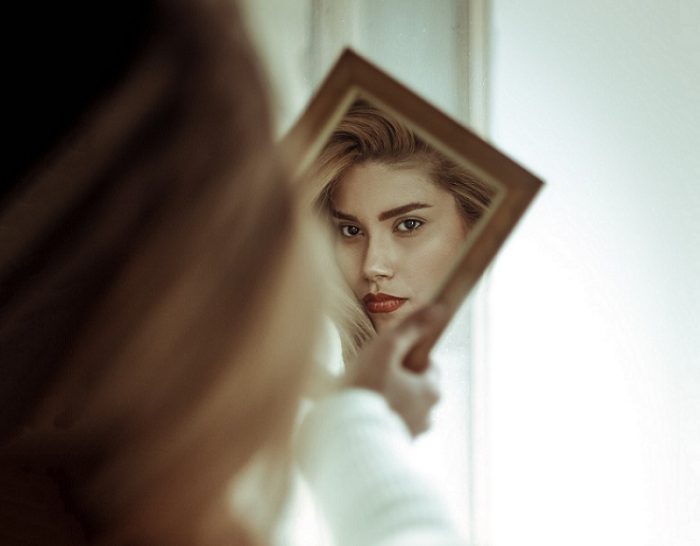I’ve been researching the percentages of men and women who choose to undergo cosmetic procedures.
I found various data from different countries, some about plastic surgery, some about minimally invasive techniques, and some about anti-aging techniques. Most of the statistics were based in the United States, but they consistently showed that around 92 percent of plastic surgery clients are women and the other 8 percent are men.
The numbers speak clearly about how women prioritize looking and feeling beautiful.
Women have been viewed as property for centuries, and they still are in some countries. They were often given two options: be someone’s property or be rejected, which equaled isolation and danger. When your best option in life is to belong to someone, your goal becomes to be chosen.
And with this goal came a yearning to increase your chances of thriving by capitalizing on two main criteria:
>> Your physical beauty
>> Your capacity to take care of others
The family you came from—which determined your money, status, and land owned—counted as well back then, but there wasn’t much women could do about that one.
What this goal also implied was the need to compete with other women in order to be chosen.
The reason I underline this is because the story we’ve been told—“I have to be beautiful, take care of others before me, and overshadow other women in order to be chosen, otherwise what is left for me is a dead end”—is deeply ingrained in most of my clients and I would say in most women’s belief systems. And even though we are in 2020 and circumstances have thankfully changed to a degree, thanks to a bunch of courageous women, this particular story still creates a lot of suffering.
Our nervous system is built a certain way in response to our environment. And survival is the main priority. Whatever story we believe to be true and supportive of our survival will tremendously impact our emotional reality, our thoughts, and our behaviors.
It’s not always conscious, but it shows up in many circumstances. Here are some common examples of how the need to be chosen can impact our life as women:
>> Comparing ourselves to the other women in the room. Let’s be honest, we still compare the way we look more frequently than we compare diplomas, and at the end of the day, comparing is comparing.
>> Having a high percentage of negative thoughts floating around our heads when it comes to how we view our face or body compared to a language of positive appreciation.
>> Seeing ourselves, and I will quote other women I’ve heard, as “not like a real woman” because we didn’t or couldn’t have children.
>> Putting ourselves at the disposal of our sexual partners, even if we don’t feel like having sex or engaging in a particular sexual activity.
>> Experiencing a deep fear of being alone when we’re dealing with the pain of heartbreak. I’m not talking about sadness here, but about the sensation of almost dying, like our safety left when this particular person did.
>> Accepting a toxic relationship because we believe we can’t have better. This shows that we don’t see ourselves in the position of the one who does the choosing.
>> Having thoughts of not finding love again because we’re “too fat,” “too old,” or too something.
How many of these experiences sound familiar ?
Sadly, this process has been reinforced by our mothers and grandmothers. We can’t blame them; they did what kept them safe. They transmitted what they thought would keep us safe. (And I won’t even begin to examine the emotional censoring that comes along with “taking care of others,” because that deserves a full article.)
What I find worrying is that though times have changed and women are more independent, financially at least, those diktats are not going away. The pressure our family, our culture, and our society impose on women is still present in our psyche, like an internal voice that monitors too much of our more modern life.
This voice is so internalized, it becomes a part of us. It takes a lot of awareness to be conscious of it, and it takes some self-work to undo that heavy conditioning.
To change this dynamic and move from submission to empowerment, we have to be aware of all the controlling messages that are part of our environment and choose to not engage with them.
Before, women were owned. Their bodies and lives were in service of others in exchange of safety, status, money, and belongings. Now we choose what we do with our bodies, what kind of partner we want, and what career fits best. Now, we are the owners. We make the money.
But I’ve noticed that a significant part of our money is taken away by this same old narrative. I wish there was a way to measure the precise amount of this “good potential wife” tax we still pay, but the problem is less about what women buy and more which part of ourselves we’re buying from.
There are times we buy out of pure desire, but often we buy out of insecurity. We buy whatever we think will help us become who we think we have to become to be loved—to be chosen.
And this consumerism is exactly how the creative power of women is taken away.
To break the loop, for us and for future generations, we have to take care of our external environment and we have to do our internal work.
Externally, we are still bombarded by disempowering messages. Many media outlets constantly perpetuate these ideas, so it’s important to be aware of them—because what we pay attention to is what will grow in our world. If we feed our mind and our heart images and stories that keep this power dynamic alive, we will never feel empowered as women.
I want to call your attention to a few examples:
>> Did you grow up with Walt Disney cartoons reinforcing those medieval fairy-tales where women were powerless?
>> Do you binge the many TV series and films that portray women as desperate for love or competing with each other for a partner? Yes, some of them are funny and well-written, but still they don’t serve women.
>> Do you follow social media accounts that make you feel bad as a woman or those that support embracing female diversity in term of body shape, color, and age?
>> Were you influenced by a spiritual and religious community? Look at how many traditions exist where the leader is an overpowering male, and how many harmful interpretations of religious texts shame the female body.
>> How often do you engage with advertisements that objectify the female body?
>> How many women’s magazines that you read only hire young models to represent women in their various articles, whatever the topic is?
Now, let’s have a look inside. As a result of all these external stimuli:
>> Do you treat yourself as an object and over-consume or do you create?
Creation generates more life force and diversity. For example, do you give yourself permission:
>> To love your uniqueness?
>> To feel all the feels?
>> To show yourself naked, emotionally?
>> To say and do all the things instead of buying all the things?
>> To take intimate risks?
>> To ask for help if you can’t?
Because until we change and choose ourselves, we will continue to wait for others to choose us.
~











Read 2 comments and reply